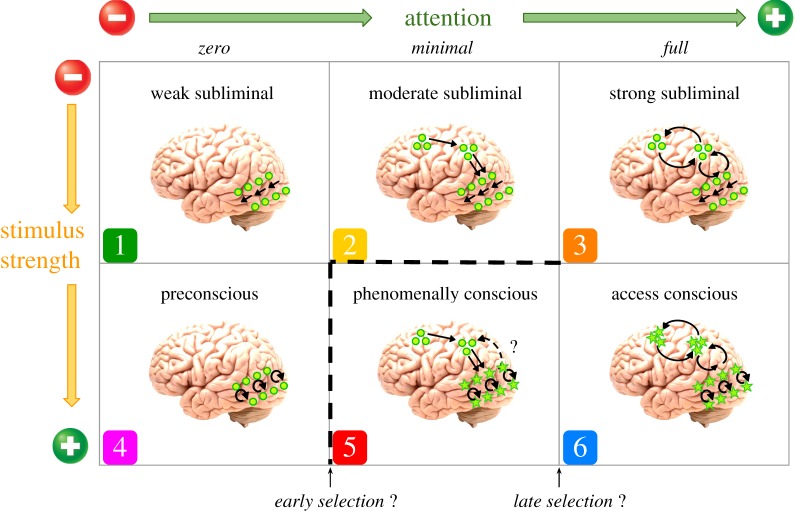Figure 1.
An updated taxonomy that combines key insights from global neuronal workspace theory [5] and recurrent processing theory [6]. The primary axes represent the two factors that are most commonly manipulated in experiments on perceptual awareness: stimulus strength and attention. Each cell represents a hypothesized state in which these two factors interact. Consistent with Lamme's [6] proposal, as stimulus strength is increased, the amount of localized recurrent processing in the relevant sensory cortices (here, visual) increases. Consistent with Dehaene et al.'s [5] taxonomy, as the amount of attention increases, the amount of fronto-parietal activation and widespread information sharing increases. What distinguishes this framework from previous proposals is the incorporation of two key ideas: (i) attention is necessary for phenomenal consciousness (departing from Lamme [6]), and (ii) phenomenal consciousness relies on different attentional mechanisms from access consciousness (departing from Dehaene et al. [5]). Importantly, this framework is consistent with Prinz's [10] AIR theory. According to the proposed framework, while most previous studies have compared cells 4 and 6 or cells 3 and 6, future studies should design experiments that enable contrasts between cells 4 and 5 and between cells 2 and 5 (indicated by the dotted lines). The star-shaped nodes indicate possible regions that might be linked with conscious visual perception.

